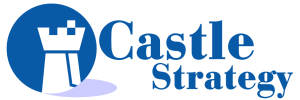As you read this headline you think this can’t be right. If you want to increase productivity the simplest thing you can do is work harder. Consider something basic like digging a hole. If you want to be more productive simply dig faster.
What if I was to tell you that you have just dug that hole in the wrong place, how productive was that?
So often in business things that we believe, things we have been taught by our parents and studied in a university are not altogether right.
Task Focused v Outcome Focused
Reflecting on my own experience I can tell you I know a lot about being task focussed. I was the person who had to-do lists for everything and would charge through a big list of things each day ticking them off as they were completed. It felt great, I felt I was achieving.
Well, I was achieving, but not as much as I could have. The things I was doing were the things that were easy, fun and I knew I could complete. This is an enjoyable place to be, and for your staff, it brings a real sense of job satisfaction. This is why people love doing task-focused work.
On the contrary, when you get truly outcome focused you are faced with a much smaller list that takes time and effort just to come up with, let alone deliver. This list tends to be full of uncomfortable hard-to-do things. To make matters worse there is a chance of failure when you focus on outcomes. This is why people find outcome-focused work difficult and avoid it.
This is not just an avoidance by the team, all too often it is the CEO/MD who avoids the outcome focused approach. They simply can not fail and God forbid, get egg on their face. It is much easier to tell shareholders the business is stable and should see a growth of 5% over the next 2 years – how very mediocre.
“Do the hard jobs first. The easy jobs will take care of themselves.”
The impact of getting this wrong
One example of this is the business owner who wants more money and pushes their team to generate more sales. They focus on selling more to their existing customers, expanding into new markets and new sectors. The outcome is a short term improvement in sales but at the expense of margin and customer care which reduces customer life expectancy from 3 years to 18 months on average.
On deeper reflection, the business owner realises that what they really want is to increase their business value so they can sell in the next 3 years. A business valuation expert tells them that for their industry the two biggest things they can do to increase business value is to remove themself from the business and increase the life expectancy of customers.
In money terms, based on a simple calculation (profit x multiplier) here are what the two different approaches could deliver.
Current business value
£300K x 4 = £1.2M
Focus on sales in the 3 years ahead
£600K x 3 = £1.8M
Focus on the company running without the owner and increasing customer life expectancy
£400K x 7 = £2.8M
As you can see from this example the difference between getting this right and wrong is huge. What you may not have seen in this simple example, is the fact the two stakeholder groups must have their needs delivered for it to be a success. The first is the shareholders who are looking to increase asset value. They must have high profit and more importantly a high multiplier. The second is customers who need to have good customer service and good products.
In essence, the business owner who is digging a hole in the wrong place.
“Efficiency is doing things right. Effectiveness is doing the right things.”
What others say about how to increase productivity
As you can see from the conservative example above the impact of focusing on the right outcomes can have a dramatic impact on productivity and on your business. Most things you read on productivity are aimed at having an incremental impact. People just don’t believe that you can have a huge impact on productivity.
When you look at others talking about how to increase productivity in the workplace they will say you need to tackle multitasking, reduce meetings, buy a new IT system, improve management, improve the working environment, better reward employees or get in a lean consultant.
All these things are targeted at making an incremental improvement and they do. However, if you want to make a step-change in your productivity you need to focus on outcomes first at a strategic level, then at an operational level. Get everyone in your organisation focused on this and the impact is huge.
How to ensure your people are highly productive
Making this step is not as easy as telling your people to now only focus on outcomes rather than the individual tasks, because this is what they have done all their life, and as I mentioned earlier it is fun and easy.
Your people just don’t know how to do this.
Give this instruction and most will stare at you blankly then go back to doing what they have always done with no improvement too productivity. Those that give it a go will likely end up focused on the wrong outcomes because they are working at an operational level with no strategic direction. Here are the changes I would recommend to take in order to move from task-focused to outcome-focused and make a step-change in your productivity.
1. Make sure you know where you are going
Take the time upfront to get clear on where you are going as a company. ‘We want to hit £10M turnover this year’ is not going to cut it. Why is it you want that? Which one of your stakeholder groups is that delivering for? Is that really what they want? Why?
Get this wrong and you are wasting time, money and effort digging a hole in the wrong place.
2. Focus on your strategy daily
As your team moves to outcome-focused working, they need guidance on the strategic direction of the company so that they focus on the correct things. Put your business strategy up on walls for all to see day to day and hold meetings to communicate it effectively.
It is all too easy to revert to old habits and those busy task-focused employees can easily appear again if you are not careful.
3. Use the planning backward method
Plan backwards from your end goals to improve your productivity. If you know where you are going in tangible terms, not number targets, your brain can use “prospective hindsight” to calculate the fastest route to your end goals.
People are great at this in their personal lives; consider the last time you planned to catch a flight – you start at when the flight is due to take off. However, at work, everyone plans forward which generates big to-do lists, escalating costs and results in busy people doing meaningless tasks.
4. The manager becomes the servant
With your people clearly focused on going in the right direction and working on the outcomes to get them there, position your managers as their servants. Anyone in a promoted position, right up to and including CEO, should be asking those beneath them, “What do you need, what can I do to help you?”
In the average business, the employees are there to do as their manager asks or instructs. Some managers may find this undermines their position and need to be supported by this new way of improving your productivity.
5. Cutaway wasteful activities
This sounds so simple but in practice is incredibly difficult. Familiar processes you do every day and which make you feel good are no longer required. Habits that made you efficient are now unwanted. Or skills and knowledge that underpin your status become redundant.
Just take a minute to think about those things for you, in your role today, how would you feel being asked to stop them and instead work on uncomfortable and hard tasks you may fail at?
6. Ensure new habits are embedded
Change is very often unwelcome and you need to support your people with it. Lead by example, hold workshops and listen to your people. They will struggle with this new approach.
We are all creatures of habit and your people will want to go back to easy, fun activities. Your support and encouragement will be needed ongoing to improve productivity.
7. Date your outcomes in stone
As soon as you start putting things in stone there is a real focus by all to get them done, especially if you the CEO will be checking on the date to make sure they have been done. The impact of this action on productivity can not be underestimated.
Failure to date your outcomes in stone will mean things slip and slide with no urgency to get them done, especially if they are difficult and uncomfortable.
“It’s not always that we need to do more but rather that we need to focus on less.”
Nathan W. Morris




